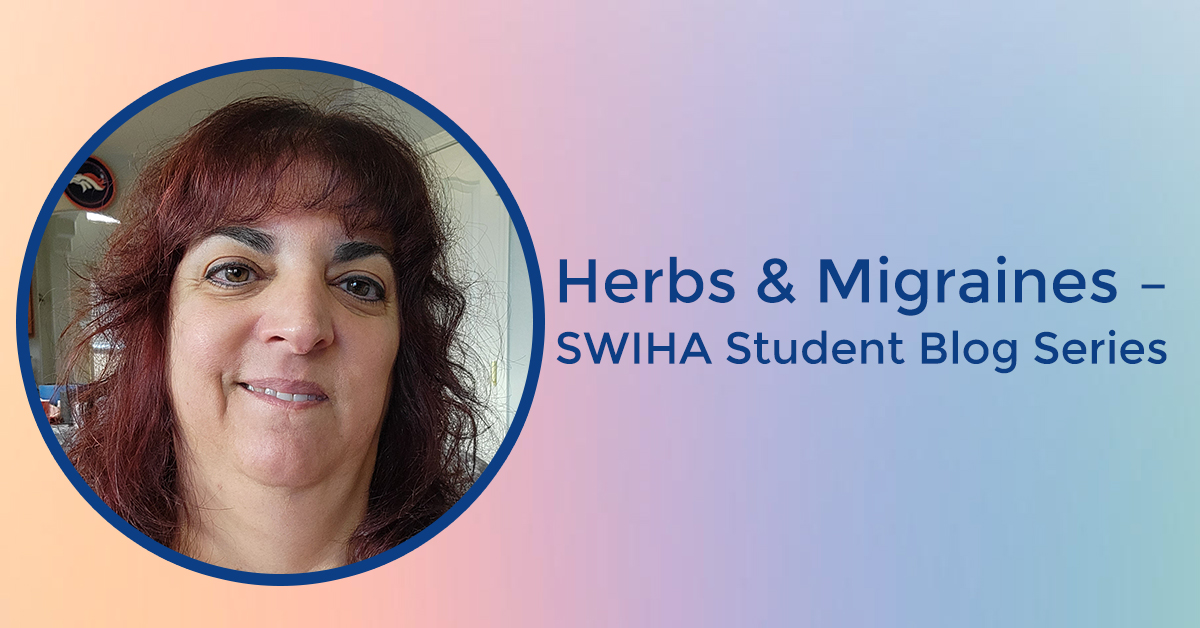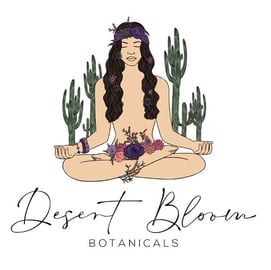
Migraines take many forms in both acute and chronic conditions. Herbs, like Feverfew, Butterbur, Lesser Periwinkle, and Ginger can work as remedies in both arenas. This is a subject of great importance to me personally. I have suffered from chronic migraines for 12 years. I struggle with a baseline headache 24 hours a day 365 days a year and I have yet to find a “magic bullet”. While I do not believe there really is a “magic bullet,” I do believe that there is help available to migraineurs for this severe and debilitating disease. That help will come in the form of ancient plant medicine with a history of potent treatment for many diseases and ailments. While there are seven types of migraines, I will explore the herbal remedies that greatly affect the pain and suffering that individuals feel during an acute or chronic attack.
Migraines: Definitions and Types
A migraine is defined as a headache that presents as throbbing to the head. It generally affects either one side or the other but sometimes both. Stanbury (2005) noted that “Migraines are neurovascular phenomena that can occur frequently, such as several times a week or infrequently such as only once or twice a year.” They are of varying intensity and can be frequently accompanied by nausea, vomiting, visual disturbances, photophobia, sound sensitivity, among other experiences and symptoms.
There are primary and secondary headaches. Migraines are primary headaches. This is because they are from no other cause, such as another medical condition. It also means that there are no other blood tests or imaging for diagnosis. Migraines of both acute and chronic nature are difficult to manage. One causative factor for a migraine can be from the blood vessels in the head constricting and then opening quickly causing a migraine to form.
Defining a chronic migraine
Chronic migraine is diagnosed as fifteen or more headache days per month. Pain medication will be taken with chronic migraine during those days. This in turn can lead to more headaches from too much medication - a rebound migraine. The symptoms may change every time. The pain might change as well, becoming more debilitating. Pain medication sometimes does not work meaning that the headache lingers causing a migraine flare.
Defining an acute migraine
Acute migraine is an active migraine. Acute migraines are those that are happening currently. When a migraine is acute, it means that it requires an attempt towards immediate relief from the pain and other symptoms. Some symptoms may include sensitivity to sound, light, and smell, blindness in one eye, or both, tinnitus, nausea, body aches and pains, and others. An acute migraine may take 72 hours - or longer - to subside.
Migraine Triggers
Triggers are the stimuli that cause a migraine to start. “Migraines are often triggered by environmental factors, with 85% of migraineurs reporting triggers,” (Khalsa, 2007). Migraines start with vasodilation. Many things can start a migraine. It can be the smell of cigarette smoke or someone’s perfume. Sounds, temperature, intake of different food and beverage, stress, crying, yelling, and many more can set a migraine off for someone. Triggers are many and varied. Some sufferers may not be able to identify exactly what their triggers are. This is because there may be more than one occurring concurrently.
Herbal Remedies
Herbs for Chronic Conditions
Herbs can come to the rescue in the instance of a chronic headache. Some are meant for prophylaxis. Others are meant to knock out the pain within a short amount of time. Herbs meant for chronic circumstances are generally intended to work over time. They can also reduce the quantity and duration of headaches.
Tanacetum parthenium: Feverfew
Tanacetum parthenium, common name Feverfew, from the Asteraceae family of plants, is an herb for prophylaxis in a chronic migraine condition. Feverfew has been used for a very long time for the treatment and interruption of migraines. It is an herb that builds up and works over time. Sanchez (2013) notes that “...the herb is safe for long term use and is used suitably as such,” T. parthenium has been studied in great detail for the prevention and reduction of migraine headaches. While there have been many studies on the use of T. parthenium (with mixed results), there has been some discrepancy in the dosages used for each trial. This leaves some doubt as to the accuracy of the studies showing little to no effect. As herbalists know, it’s all in the dosing. (7Song, 2017) asserted that “While the studies had varied results (no surprise there) the tincture is a useful adjunct for migraines.” Tanacetum parthenium is an incredible ally in keeping migraines at bay or at least minimizing them.
Effects
After defining the methods of action and what the constituents in Tanacetum parthenium are, it is important to look at its effect on migraines. T. parthenium affects migraines in many ways. It reduces pain and inflammation. It is a long-term preventative to head off a migraine attack. It can also reduce photophobia and sensitivity to sound. Tanacetum also dilates blood vessels and breaks up platelet aggregation. Feverfew is a very useful migraine herb.
Herbs for Acute Conditions
Herbs for an acute migraine condition may share actions that perform in a similar manner to chronic herbs on the migraine mechanism. Their actions, constituents, and effects differ. They differ because their constituents perform in a way that makes their actions act faster than those of their chronic counterparts. As stated earlier in this paper, the author noted that Tanacetum parthenium did have similar actions on acute headaches and the dosing may have been insufficient to be useful in an acute manner. However, as stated by Moore (1993), its best action is in long-term usage. Herbs for acute migraine work on an immediate basis as long as the onset of the headache is caught quickly enough. As we learn about the next two herbs we will be able to see their similarities and differences.
Vinca minor: Lesser Periwinkle
Vinca minor, common name Lesser Periwinkle from the family Apocynaceae - the Dogbanes is the first herb for the discussion on acute herbal remedies. Lesser Periwinkle is known for its use internally in cerebrovascular disorders. V. minor is also an herb that pairs well with other herbs to support “.....disordered blood flow to the brain…..” (Marciano & Vizniak, 2015-2020). This herb pairs well with Salvia rosmarinus and Centella asiatica.
Effects
As stated prior, the effects of Vinca minor are noteworthy because it is a cerebral stimulant that assists the uptake of oxygen to the brain. It promotes the efficient use of glucose in the brain. “For one, better oxygen use in the brain could be a benefit. It also seems to allow for better glucose use,” (James, 2009). It inhibits the migraine-causing cascade before an attack begins. It is a vasodilator, expanding the blood vessels to assist the flow of blood to the brain. In a weird twist of fate, it is also a capillary restrictor and noteworthy styptic which can stave off hemorrhage. If migraine is a hemorrhage - which again the migraine mechanism is not understood therefore this is speculation - it will stop the bleeding in the brain. Vinca minor is an herb that modulates brain function which could also assist in the prevention of migraine. It works in synergy with other herbs enhancing its effect. It is a wonderful adjunct with other herbs and compounds.
Summary and Conclusion
There are seven different types of migraines and they present in both acute and chronic conditions. Feverfew and Butterbur are herbs that are recommended for chronic conditions. Lesser Periwinkle and Ginger are recommended in acute conditions. However, it is important to remember that acute conditions may overlap chronic conditions making all four herbs necessary in the treatment of migraine headaches. Exploring these four herbal remedies has given me greater insight into my own journey as not only an herbalist but also a migraineur. I have found this exploration informative for my own pain and suffering. It is my hope that this paper sheds light on the ways these four amazing plant allies can assist people who endure the pain and suffering of migraine as well.
**To read Western Herbalism student Jennifer D’Olivereira’s full research paper submission, and learn more details, click HERE.



